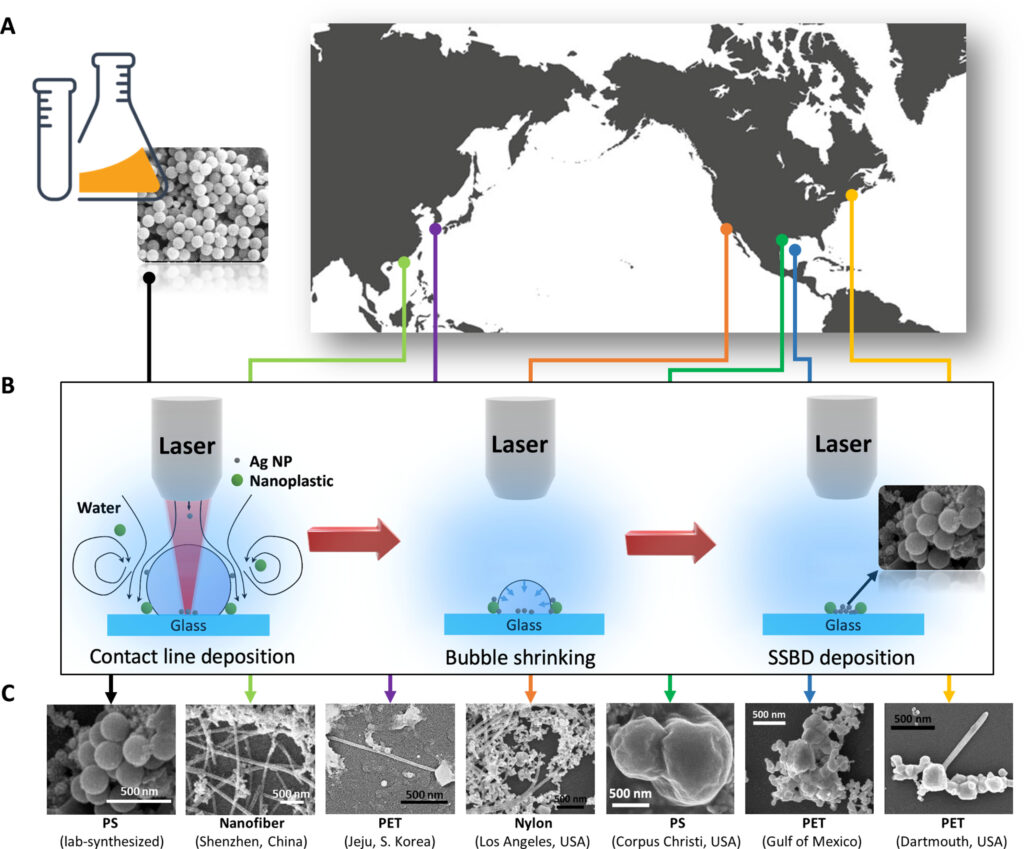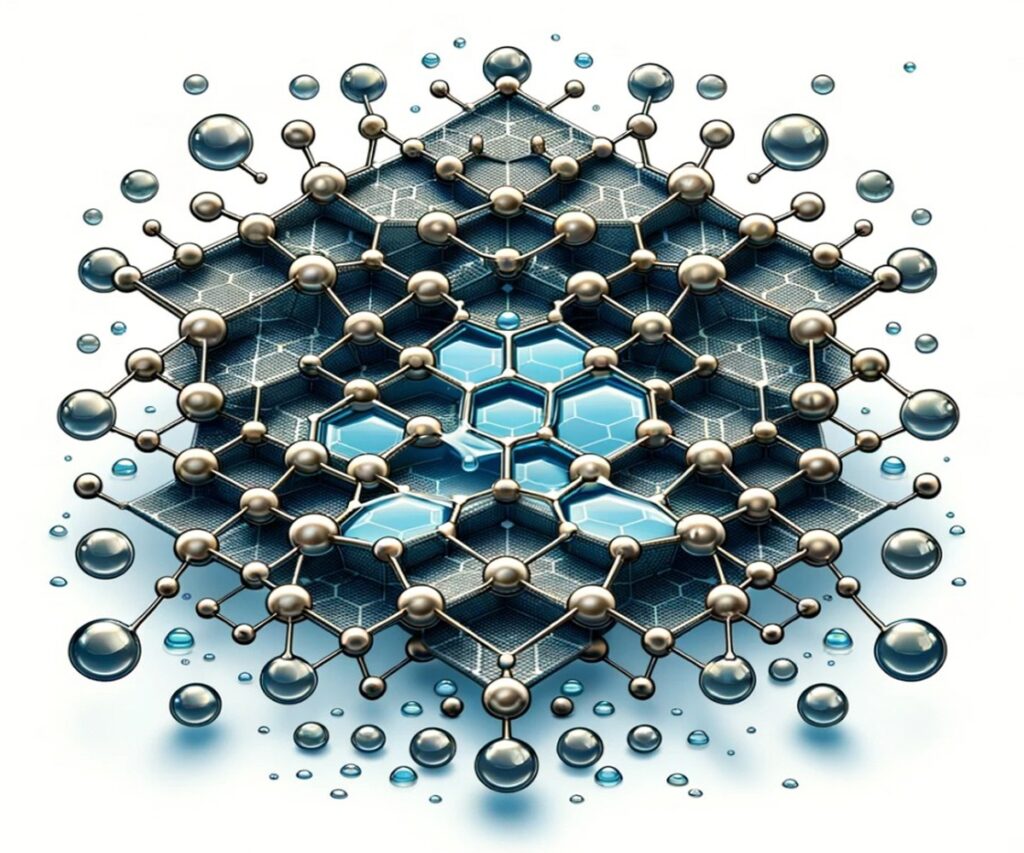Introduction – Environmental Threats from Microplastics
The problem of microplastics in the ocean is of great concern worldwide. Microplastics, these tiny particles, have serious impacts on marine ecosystems and can eventually affect humans. However, directly observing and identifying these microplastics has been challenging using existing technologies. Recently, scientists are seeking a solution to this problem by proposing a new way to observe microplastics directly in the ocean. This technology represents an important advance in better understanding the presence of microplastics in the marine environment and assessing their impact.

We present an innovative research methodology, Shrinking Surface Bubble Deposition (SSBD) technology, for observing plastic pollution in the ocean. This technique harnesses the plasmonic heating effect of nanoparticles exposed to light, generating heat that creates fine bubbles. These bubbles concentrate and bring various types of plastic particles, including nylon, polystyrene, and polyethylene, to the surface, allowing for direct visualization and analysis.
SSBD technology offers a cutting-edge approach to detecting and characterizing plastic pollution in marine environments. By exploiting the plasmonic heating phenomenon, it enables the observation and identification of diverse plastic particles, providing valuable insights into the extent and impact of this environmental issue.

The concentrated plastic particles can be directly observed through specialized microscopes, revealing the distribution and composition of plastic contaminants in the water. This technology not only advances our understanding of the diversity of plastic pollution but also offers a powerful tool for assessing its potential toxic effects on marine ecosystems.
Furthermore, the data obtained through SSBD technology can inform strategies for plastic pollution management and reduction, as well as guide policy and individual efforts to protect marine environments. It also presents an opportunity to raise public awareness and promote environmental responsibility.
By introducing innovative techniques like SSBD, researchers can gain valuable insights into the presence and distribution of plastic pollution, enabling better monitoring and mitigation efforts to safeguard the health of our oceans.
Conclusion
With regard to microplastics detection, research on SSBD (Shrinking Surface Bubble Deposition) technology represents an important technological advance. SSBD technology has enabled a more accurate understanding of the presence and distribution of microplastics in the marine environment, which could make a significant contribution to efforts to protect marine ecosystems and reduce plastic pollution.
This innovative technique harnesses the plasmonic heating effect of nanoparticles exposed to light, generating heat that creates fine bubbles. These bubbles concentrate and bring various types of plastic particles, including nylon, polystyrene, and polyethylene, to the surface, allowing for direct visualization and analysis. By exploiting this phenomenon, SSBD offers a cutting-edge approach to detecting and characterizing plastic pollution in marine environments, providing valuable insights into the extent and impact of this environmental issue.
The concentrated microplastics particles can be directly observed through specialized microscopes, revealing the distribution and composition of plastic contaminants in the water. This technology not only advances our understanding of the diversity of plastic pollution but also offers a powerful tool for assessing its potential toxic effects on marine ecosystems. The data obtained through SSBD can inform strategies for microplastics pollution management and reduction, as well as guide policy and individual efforts to protect marine environments.
Furthermore, the introduction of SSBD technology presents an opportunity to raise public awareness and promote environmental responsibility. By enabling a clearer understanding of the pervasiveness and consequences of plastic pollution, this innovative technique can foster a sense of urgency and motivate collective action toward addressing this global challenge. It is time for all of us to actively participate in environmental protection, reduce plastic use, and take action to protect our planet.
Combating plastic pollution requires a multifaceted approach, involving technological advancements, policy initiatives, and individual behavioral changes. SSBD technology represents a significant stride in the right direction, equipping researchers and policymakers with the tools to accurately assess and mitigate the impact of microplastics on marine ecosystems. As we continue to develop and refine such technologies, we can better inform and empower efforts to preserve the health of our oceans for future generations.
Source: Moon, Seunghyun, et al. “Direct observation and identification of nanoplastics in ocean water.” Science Advances 10.4 (2024): eadh1675.
https://www.science.org/doi/10.1126/sciadv.adh1675
※ This report has been compiled for the purpose of providing general information. It is based on data gathered by CHEMiFORGE. Should you have any inquiries or need to make decisions based on this report, it is advisable to consult with a CHEMiFORGE.


